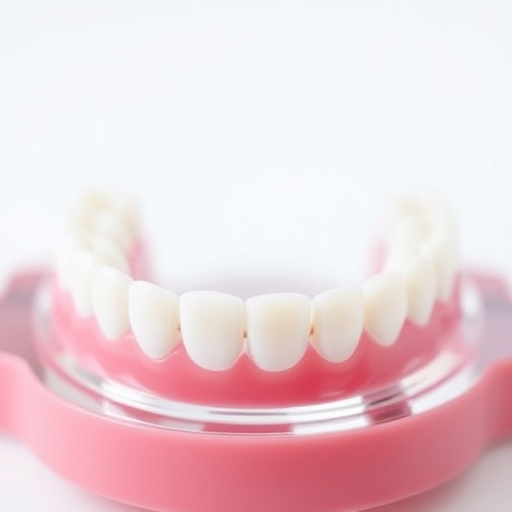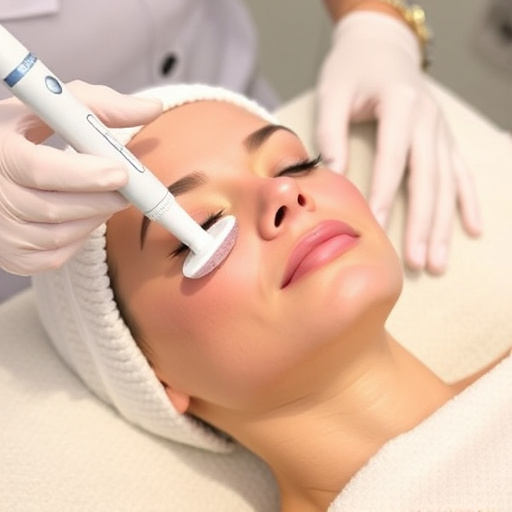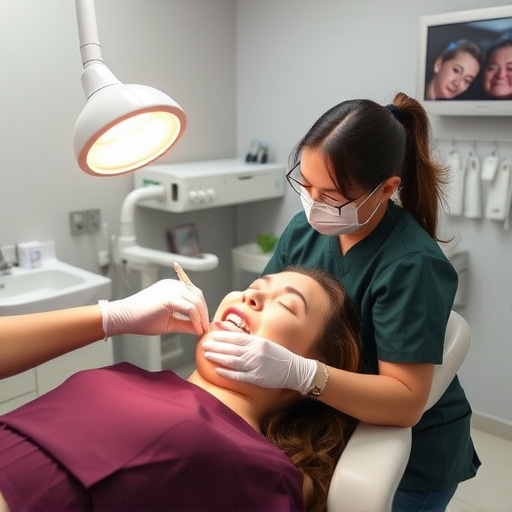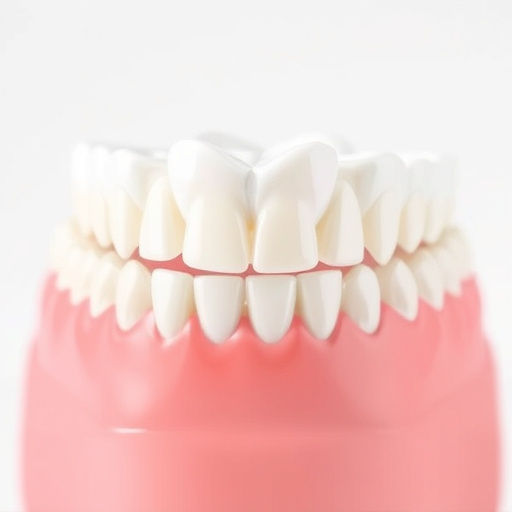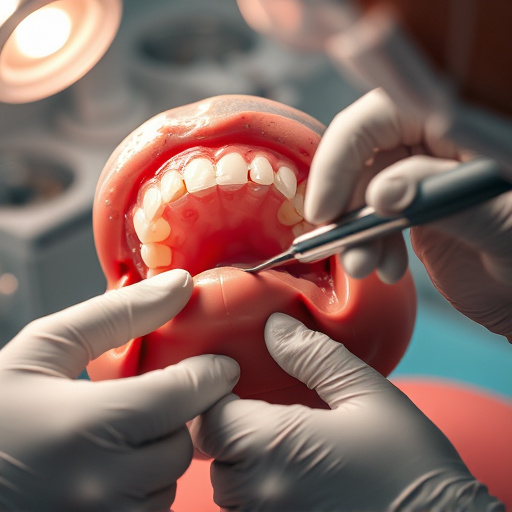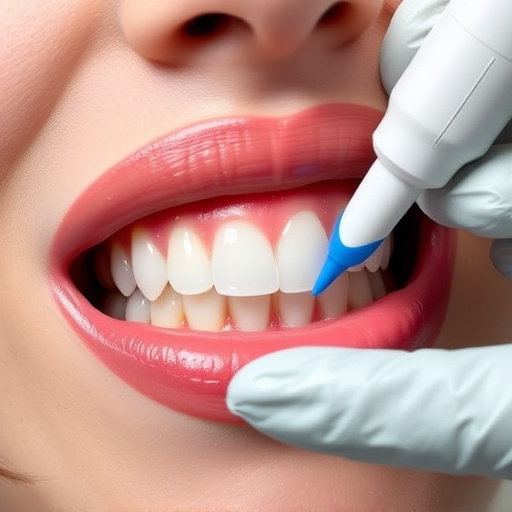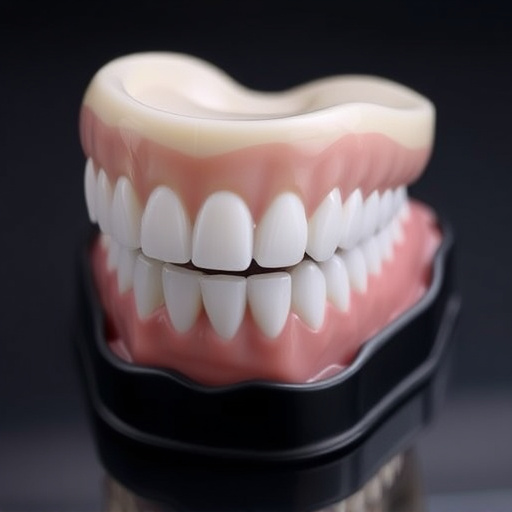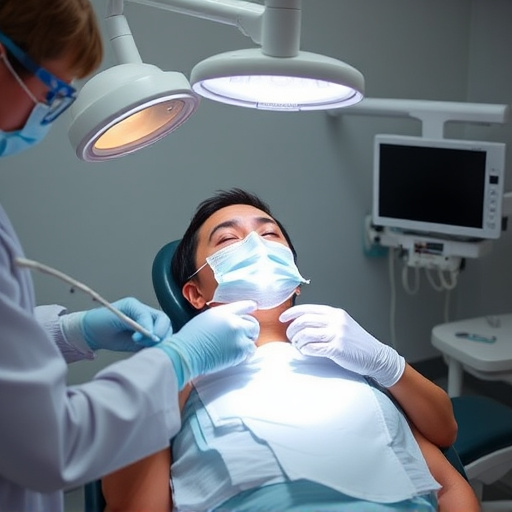TMJ disorders cause jaw pain and functionality issues, driven by genetic, muscular, traumatic, or dental factors. Initial relief comes from restorative dentistry, but advanced cases may require oral surgery procedures for structural corrections to restore normal jaw function. Techniques like arthroscopic and open-joint surgeries are minimally invasive, targeting joint repair with recovery guidance including discomfort management, ice application, medication, and dietary adjustments.
“Uncover effective solutions for TMJ (temporomandibular joint) and jaw disorders with oral surgery. These conditions can cause significant discomfort, affecting daily activities. Our article delves into understanding these disorders, exploring common oral surgery procedures tailored to individual needs. From diagnostic assessments to post-operative care, we guide you through the process. Discover how specialized treatments, including arthroscopy and joint replacement, offer long-lasting relief. Optimize your jaw health and regain comfort with our comprehensive overview of oral surgery procedures.”
- Understanding TMJ and Jaw Disorders: Causes and Symptoms
- Common Oral Surgery Procedures for TMJ Treatment
- Recovery and Aftercare: What to Expect After Surgery
Understanding TMJ and Jaw Disorders: Causes and Symptoms

TMJ (temporomandibular joint) disorders are a group of conditions that affect the complex joint that connects your jawbone to your skull. This joint is responsible for enabling jaw movement, biting, chewing, and speech. When something goes wrong with the TMJ, it can lead to various symptoms, including jaw pain, difficulty opening or closing the mouth, popping or clicking sounds in the joint, headaches, earaches, and even tooth wear. The causes of TMJ disorders are multifaceted, often involving a combination of genetic predisposition, muscle tension, injuries to the face or head, misalignment of the teeth, or arthritis.
Diagnosing and understanding the specific cause of TMJ disorders is crucial for effective treatment. Many people initially seek restorative dentistry solutions, such as bite adjustments or dental fillings, to alleviate symptoms. However, if these conservative measures fail or the condition progresses, more intensive emergency dental care might be required. In severe cases, oral surgery procedures can offer a lasting solution. These procedures aim to correct structural abnormalities, reduce joint stress, and restore normal jaw function, providing much-needed relief for patients suffering from TMJ and jaw disorders.
Common Oral Surgery Procedures for TMJ Treatment

When it comes to addressing Temporomandibular Joint (TMJ) disorders and related jaw issues, oral surgery procedures have become essential in providing effective relief and restoring optimal oral health. Some of the common techniques employed by dental professionals include arthroscopic surgery, where a tiny camera is used to view and repair damaged joint structures, and open-joint surgery for more complex cases. These minimally invasive approaches aim to preserve jaw bone and tissue while alleviating pain and improving functionality.
In certain scenarios, dental crowns, dental implants, or cosmetic fillings might be recommended as part of the overall treatment plan. For instance, a dental crown can protect a weakened tooth from further damage, while dental implants offer a long-term solution for missing teeth, providing stability and a natural look. Cosmetic fillings can also play a role in restoring damaged teeth, enhancing both their strength and aesthetic appeal.
Recovery and Aftercare: What to Expect After Surgery
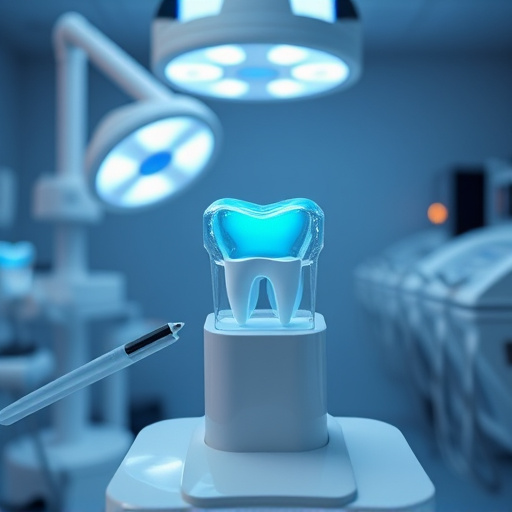
After undergoing oral surgery procedures for TMJ or jaw disorders, it’s normal to experience some discomfort and swelling. Your recovery process will depend on the extent of your surgery, but generally, you can expect a gradual return to normal activities within a few weeks. It’s crucial to follow your surgeon’s aftercare instructions diligently, which may include taking prescribed medications for pain and inflammation, applying ice packs to reduce swelling, and gently cleaning your mouth as recommended.
During the healing phase, maintaining proper oral hygiene becomes even more critical. While restorative dentistry techniques like dental cleanings and tooth repair are not direct substitutes for surgery, keeping your mouth clean and free from infection can significantly impact your recovery. Your surgeon may suggest limiting strenuous activities and avoiding certain foods until the initial swelling subsides, ensuring a smoother transition back to your daily routine.
Oral surgery procedures offer effective solutions for managing TMJ and jaw disorders, providing long-lasting relief from pain and discomfort. By understanding the causes and symptoms, individuals can seek appropriate treatment, whether it’s through arthroscopy, joint replacement, or other advanced techniques. With proper aftercare, patients can experience improved jaw function and enhanced quality of life. These oral surgery procedures are a testament to modern dentistry’s ability to address complex oral health issues.




